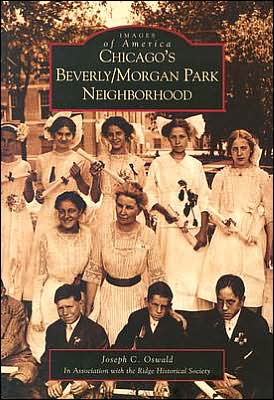

 |

|

The average rating for Chicagos Beverly Morgan Park Neighborhood, Illinois (Images of America Series) based on 2 reviews is 3.5 stars.
Review # 1 was written on 2020-12-30 00:00:00 David Worthington David WorthingtonThe Great Dayton Flood Located in southwest Ohio, the city of Dayton has several claims to fame. The city hosted the Dayton accords, ending the war in Bosnia. It was the home of the Wright brothers and of their friend, the African American poet, Paul Lawrence Dunbar (1872- 1906). Dunbar was born and died in Dayton. He eloquently described his city in his poem "Toast to Dayton." This poem captures much of the spirit that the community would later display in response to the flood discussed in this review. "Love of home, sublimest passion That the human heart can know! Changeless still, through fate and fashion Rise and fall and ebb and flow, To the glory of our nation, To the welfare of our state, Let us all with veneration Every effort consecrate. And our city, shall we fail her? Or desert her gracious cause? Nay - with loyalty we hail her And revere her righteous laws. She shall ever claim our duty, For she shines - the brightest gem That has ever decked with beauty Dear Ohio's diadem." Dayton is also remembered for the great flood that took place just after Easter, in March, 1913. Up to its time, this flood was part of what was the greatest natural disaster in United States's history until eclipsed by the Great Mississippi Flood of 1927 and, in our own day, by Hurricane Katrina. Author Trudy E. Bell offers a history and pictorial account of the Great Dayton Flood in her recent book for the Images of America series. Bell has written earlier books about meteorology as well as works about bicycling in New York City. Dayton is located in the floodplain of the Great Miami, Stillwater, and Mad Rivers together with a creek, known as Wolf Creek In early 1913, due to many factors, the soil around Dayton and the inflowing rivers became saturated. During Easter Week, wind and ice storms cut off most of Dayton's communications. This was followed by torrential rains which the riverbeds were unable to handle. The levees protecting Dayton were breached on Tuesday, March 24. Much of the city was quickly submerged under nearly 30 feet of water. Fires broke out. The flood receded later in the week, leaving nearly 100 dead in the city and untold destruction in its wake. In 1913, local disasters were not considered within the purview of the Federal government. The administration provided medical and military personnel and surplus food. But no money was appropriated and no program developed to deal with the catastrophe. The local community and its business and political leaders responded to the flood with great resilience and energy. The Dayton Flood and its aftermath were amply documented in surprisingly good photographs. Bell has assembled many of them in this 128-page, six-chapter book to tell a compelling story. In the process, she offers an excellent photographic portrait of a city in mid-America in the early 20th Century. The opening chapter of the book covers the destruction caused by the flood as it submerged much of Dayton. She follows this description with the rescue efforts which featured the use of flat-bottom boats to navigate the flood and rescue many stranded people. A primary hero of the book is John Patterson, the President of Dayton's National Cash Register Company. Convicted at the time of criminal violations of the antitrust laws (the conviction was later reversed on appeal), Patterson spearheaded the relief effort by the construction of the flatboats and by opening the extensive facilities of NCR, located on high ground, to refuges from the flood. The destruction wrought by the flood, and by the attendant fires, is documented graphically in the third chapter of the book. In chapter 4, Bell shows the relief efforts subsequent to the flood. While voluntary contributions poured in from throughout the United States, Bell emphasizes the local character of the effort. And she properly points out that many of the photographs show people smiling and ready to begin anew in the face of great and mostly uninsurable losses. The fifth chapter of the book shows the clean-up and rebuilding efforts that began almost immediately after the disaster as most of the community showed grit and a determination to bounce back. The final chapter of the book describes how the effected community funded and developed the Miami Conservancy District which sponsored the construction of five massive earthen dams to prevent a similar catastrophe from occurring again. The Miami Conservancy District remains in existence. The series of dams have withstood over 1500 possible flood conditions over the years, including conditions in 1937 and 1982 which might, if left uncontrolled, have resulted in an experience similar to that of 1913. The rare photographs and the commentary of this book tell of an important historical event. More importantly the book suggests how a sprit of community, strong leadership, and fortitude can help overcome situations that appear desperate indeed. This book is an excellent addition to the Images of America series of photographic local histories. Robin Friedman |
Review # 2 was written on 2018-02-12 00:00:00 Jason Johnston Jason JohnstonVery informative, a little dry. |
CAN'T FIND WHAT YOU'RE LOOKING FOR? CLICK HERE!!!